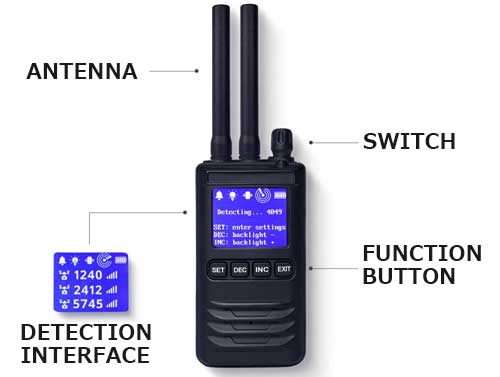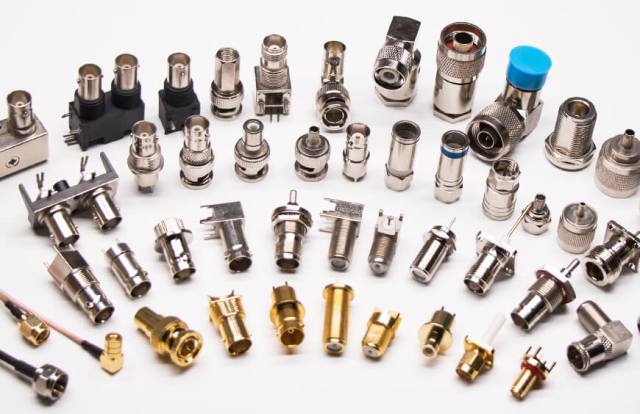The Evolution of 1.85mm (V) Connectors: History, Standards, and Applications

Introduction
In the realm of radio frequency (RF) and microwave engineering, connectors play a pivotal role in ensuring signal integrity and system reliability. Among the myriad of RF connectors, the 1.85mm (V) connector stands out for its compact design, high-frequency performance, and widespread adoption across various industries. This article delves into the history, standards, and applications of the 1.85mm connector, highlighting its significance in modern communication systems.
Historical Background
The 1.85mm connector, also known as the “V connector,” was developed in the mid-1980s by Hewlett-Packard (now Keysight Technologies) to address the need for a coaxial connector capable of operating at frequencies up to 67 GHz. The design was introduced as an open standard under the IEEE 287 Precision Connector Standards Committee. The 1.85mm connector was designed to provide mode-free operation up to 67 GHz, making it suitable for a wide range of high-frequency applications .
Technical Specifications
- Impedance: 50 ohms
- Frequency Range: DC to 67 GHz
- Coupling Mechanism: Threaded (M7 threads)
- Material: Typically stainless steel with passivation, and beryllium copper contacts with gold plating
- Durability: Rated for up to 500 mating cycles
- VSWR:
- DC to 27.0 GHz: 1.10:1 max
- 27.0 to 40.0 GHz: 1.15:1 max
- 40.0 to 50.0 GHz: 1.18:1 max
- 50.0 to 67.0 GHz: 1.25:1 max
Design and Compatibility
The 1.85mm connector features an outer conductor diameter of 1.85 mm and an outer diameter of 4.7 mm, allowing compatibility with 2.4mm connectors. This compatibility ensures that the 1.85mm connector can mate with 2.4mm connectors without damage, providing flexibility in high-frequency applications .
Applications
1.85mm connectors are widely used in various industries due to their high-frequency performance and reliability:
- Telecommunications: Utilized in 5G infrastructure and high-speed data transmission systems.
- Aerospace and Defense: Integral in radar systems, communication equipment, and electronic warfare systems.
- Test and Measurement: Found in network analyzers, spectrum analyzers, and other RF testing equipment.
- Satellite Communications: Employed in satellite payloads and ground station equipment.
Advantages of 1.85mm Connectors
- High-Frequency Performance: Supports frequencies up to 67 GHz, suitable for millimeter-wave applications.
- Mechanical Stability: Threaded coupling ensures a secure and vibration-resistant connection.
- Compatibility: Mates with 2.4mm connectors, providing flexibility in system design.
- Durability: Designed for repeated mating cycles without significant degradation in performance.
Considerations for Use
While 1.85mm connectors offer numerous benefits, certain considerations should be kept in mind:
- Precision Handling: Due to their small size and high-frequency operation, careful handling is required to prevent damage.
- Torque Specifications: Proper torque should be applied during installation to ensure optimal performance.
- Environmental Conditions: Designed to operate in a wide temperature range, typically from -55°C to +165°C .
Global Sourcing and Shipping Advantages
For businesses and engineers sourcing 1.85mm connectors, Shipping to Japan where tariffs are cheaper than China presents a strategic advantage. Japan’s favorable trade agreements and lower import duties can result in cost savings and streamlined logistics, making it an attractive destination for procuring high-quality RF components.
Conclusion
The 1.85mm (V) connector’s enduring presence in the RF industry is a testament to its robust design and adaptability. From its origins in high-frequency applications to its widespread use in modern communication systems, the 1.85mm connector continues to be a cornerstone in ensuring reliable and efficient signal transmission. As technology advances and the demand for high-frequency applications grows, the 1.85mm connector’s relevance and utility are poised to remain strong.






